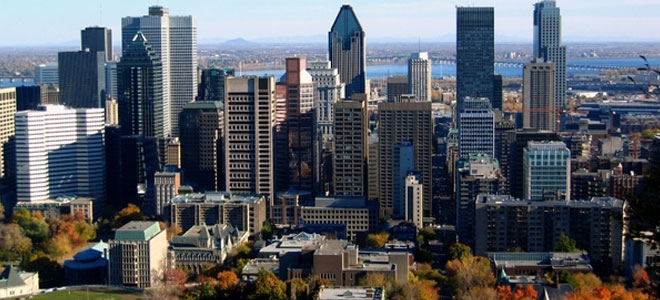Canada’s major rental markets continue to thrive in 2020, according to the latest rent report from Rentals.ca and Bullpen Research & Consulting.
Montreal, London, Winnipeg and Toronto are all experiencing double digit percentage increases for annual growth in median rents, with Montreal leading the way at 38 per cent. Other cities with increases over 10 per cent include: Mississauga, North York, Etobicoke, Ottawa, Scarborough, Quebec City, Kitchener and Hamilton.
On the other end of the spectrum, four cities witnessed double digit percentage decreases for annual growth in median rents in January: Saskatoon, Red Deer, Regina, and Edmonton.
In the city of Montreal, average monthly rents spiked in 2019 after a relatively tame 2018. Since last January, average prices on the island have risen nearly $400, an increase that is being felt by prospective renters.
“We see that renters in Montreal keep on searching for lower cost of living, and they’re willing to search outside of central areas to find affordable housing,” said Vincent-Charles Hodder, CEO of Local Logic, referring to the fact that listings in areas outside of the more expensive downtown core are being viewed by more searchers.

“The strong rent growth in Quebec and Ontario is enticing developers to build more apartments,” said Ben Myers, president of Bullpen Research & Consulting. “According to Canada Mortgage & Housing Corporation, there were more rental starts than condo starts in January in both provinces. This supply is much needed to satisfy the increasing tenant demand, as the flattening out of condo rental rates could negatively impact investor activity and reduce secondary market supply.”
National and provincial averages
Nationally speaking, average rents for all property types are up just 1.3 per cent overall, but for rental apartments specifically, year-to-year rent has grown 5 per cent rising from $1,463 per month to $1,536 per month.
Following three consecutive months of decline, the average rental rate in Canada for all property types increased month-over-month in January by 1.3 per cent to $1,879 per month. This increase remains well below the September 2019 high average rate of $1,954 per month.
“Annual growth in the average rental rate nationally cooled off in January, despite major rent increases in a number of municipalities in Canada,” commented Matt Danison, CEO of Rentals.ca. “Some rental demand is shifting to the resale market as we are recovering from the stress test’s credit tightening, and the fear of interest rate hikes. This shift is also affecting the high-end rental market, as households choose to buy instead of considering these units.”
Toronto remains at the top of the list for January average monthly asking rent for a one-bedroom and two-bedroom home at $2,315 and $2,926 respectively. Ten of the top 11 cities for highest average monthly rent in January for one-bedroom and two-bedroom homes are in Ontario.
Rents have increased significantly for all property types year-over-year in Quebec (22%) and British Columbia (17%), but declined in Alberta (-3%) and Saskatchewan (-11%).
Average rental rates in Ontario continue to outpace the other major provinces in Canada, with an average rent of $2,290 per month in January 2020, a 6 per cent increase year-over-year.
Other key takeaways from the rental markets report:
- The community of Fort Nelson in northeast British Columbia had the lowest average monthly rent of the 30 cities analyzed for January with a one-bedroom home going for $587 and a two-bedroom at $707.
- Other cities on the low end of average monthly rents in order of most affordable for a one-bedroom home, include: Quebec City, Gatineau, Saskatoon, Lethbridge, Red Deer and Regina.
- Rental apartments in Canada have seen rents per square foot increase by 6.8 per cent annually from $1.89 per square foot in January 2019 to $2.02 per square foot in January 2020. The average unit size has declined by 20 square feet year-over-year to 810 square feet. Smaller units typically have higher per-foot rental rates.







